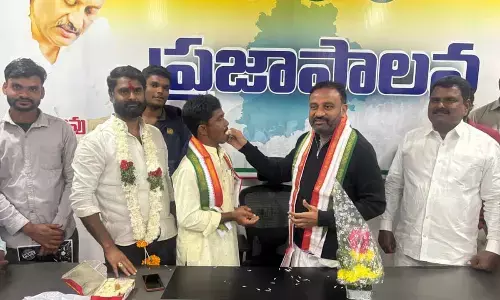The fallacies of river interlinking

The NDA 1 government was committed to Interlinking our rivers but was not able to make much progress.
The NDA 1 government was committed to Interlinking our rivers but was not able to make much progress. Now with a thumping majority, NDA 2 is likely to push this project with a gusto.
At the same time, very recently, the National Green Tribunal has put a stop on the Godavari-Krishna-Cauvery Interlinking Project due to lack of environment clearance.
The record of NDA 1 is to push the "pet" projects irrespective of the legal nuances. Instead of treading on that dangerous path, it would be advisable to rethink the project altogether.
The project is based on the misconception that some rivers have surplus water that can be reached to deficit areas. However, the floods in the donor river have a huge economic and ecological value.
The floods lead to the water of the donor river spreading over large areas and recharging the groundwater. This groundwater is subsequently used to draw water for irrigation.
By transferring floodwater of one river to another, we will reduce the flood in the donor river basin, which will lead to a reduction in the area irrigated in the donor river basin and increase it in the recipient river basin.
The net addition may be much less than the area increased in the recipient river basin. Secondly, floods have a huge ecological function. Many species of plants survive if they get floodwaters once in, say, five years.
Thirdly, during the floods, the rivers transport to the sea the sediments that are accumulated in their riverbeds for many years. This transport of sediments will be reduced and that will lead to coastal erosion.
Fourth, every river has its own ecological life. Bringing water of an alien river may lead to the killing of many species of fish, insects and birds. Fifth, global warming is slated to make rainfall more intense in short spells followed by long periods of dryness.
It will require huge canals to transport floodwater during these short spells of intense rains. Six, global warming will certainly shrink our glaciers and even our springs.
Thus, the flow in our rivers will reduce. The donor river basins would soon be clamouring for their own survival and be loath to part with water for another river basin.
In any case, interlinking has only been possible so far between two rivers within a State. The Ken-Betwa Link was entirely located in Madhya Pradesh. The Rajasthan government has recently given nod to interlinking of Brahmani and Banas Rivers.
No State is willing to give its water to another State. We have seen that the Satluj-Yamuna Canal issue is burning after many years because it entails interstate transfer of waters. Therefore, the project is destined to fail.
The global experience of interlinking the seas has not been very positive. Professor Baruch Kimor has studied the ecological impact of Suez Canal, which opened in 1869 linking the Red Sea with the eastern Mediterranean.
In the first fifty years, he says, only a moderate rate of migration took place between the two marine environments. This trend accelerated rate in subsequent years, mainly in a northerly direction.
Some of the fish species of Red Sea origin, which penetrated into the eastern Mediterranean, proliferated in the new environment and established stable populations. The goatfish and the lizardfish of Red Sea origin pushed aside the red mullet and the hake of the Mediterranean.
The Panama Canal receives its water from a river basin in the centre of the isthmus. Locks on both sides enable the passing of ships. This system depends on the availability of river water coming from this basin.
Deforestation and unsustainable agricultural activities are however threatening the proper functioning of the lake. Uncontrolled surface runoff causes erosion and sedimentation of soil material in the lake, which reduces its storage capacity. This is threatening the viability of the Panama Canal.
Instead of pushing with interlinking, the government must push for rainwater harvesting. As said above, the rainfall in the coming years will come in short intense spurts. The present methods of rainwater harvesting such as building check dams may not suffice to hold water of these intense spurts.
The government should consider taking up a plan to pay farmers to make bunds around their fields to trap the water within their fields and help it recharge groundwater.
Gujarat has a number of successful experiments where local people have harvest rainwater with excellent results. This must be replicated across the country.
There is also a need to reduce our water consumption. About 80 percent of our water is used in agriculture. Of this, a large portion is used to cultivate water-guzzling crops like sugarcane, menthe, red chilies and grapes.
Some of these crops are then exported. In the process, we are packing our water in these produce and exporting it. The government must impose a hefty tax on the cultivation of water-guzzling crops. That will reduce the consumption of water and the need to resort to interlinking of rivers.
If the government still wants to modernise our water system, the way forward is to make a national water grid just as we have a national electricity grid. The Union government can set up a National Water Exchange.
States can make offers for sale and purchase of water in the exchange. Assam could harvest rainwater and sell it to Odisha. Once a sale is done, the requisite pipelines can be established. In this way, it will become economically profitable for States with high rainfall to harvest their rainwater and sell it.
That will increase the total availability of usable water. It will also ensure that the buying State uses the water judiciously and prevent waste. River interlinking is a bad idea that will not work. It better to abandon it now rather than later.
Author was formerly Professor of Economics at IIM Bengaluru


















